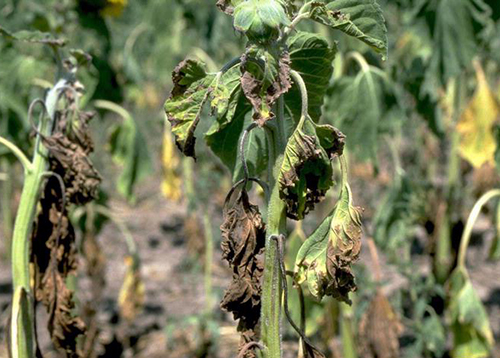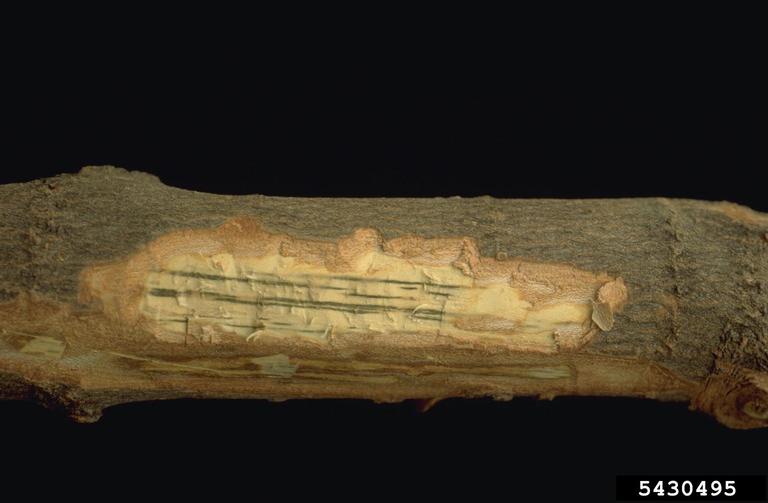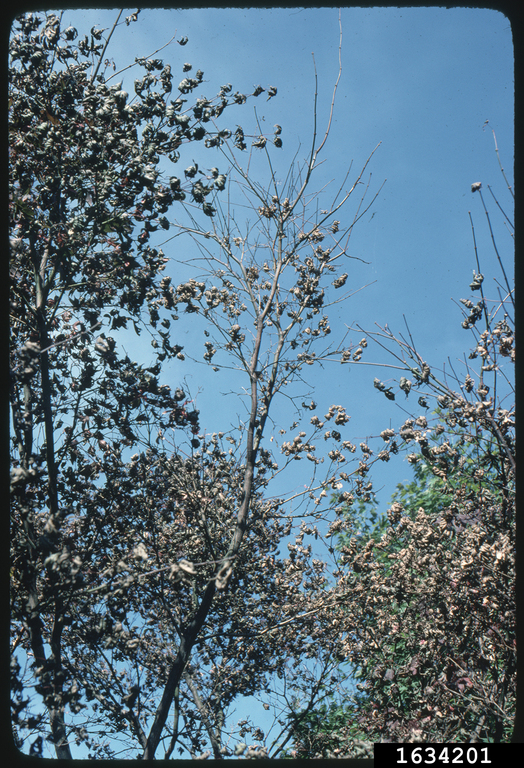Integrated Pest Management
Verticillium Wilt
Verticillium dahliae
Hosts, Symptoms & Signs
- many deciduous trees, shrubs and annual and perennial ornamentals
- herbaceous plants wilt during the hottest part of the day and recover in the evening; this pattern can continue for weeks
- some herbaceous plants may die; others will struggle
- plants are often yellow (nutrient deficiency as the struggling plant cannot take up enough water and nutrients) and may stay small depending on time of infection
- dark streaking in the sapwood
- leaf dieback
Disease Cycle
- soilborne pathogen; fruiting structure can survive in the soil for 10 or more years waiting for a suitable host to be planted
- small trees can die within a few months of infection; large trees often have only one limb at a time die back
IPM Recommendations
- There are no chemical control options.
- After a plant is diagnosed with verticillium wilt, the best management option is to replace it with a resistant variety (if available) or resistant plant species.
- Click here to view a complete list of verticillium-resistant plants compiled by the University of California.




